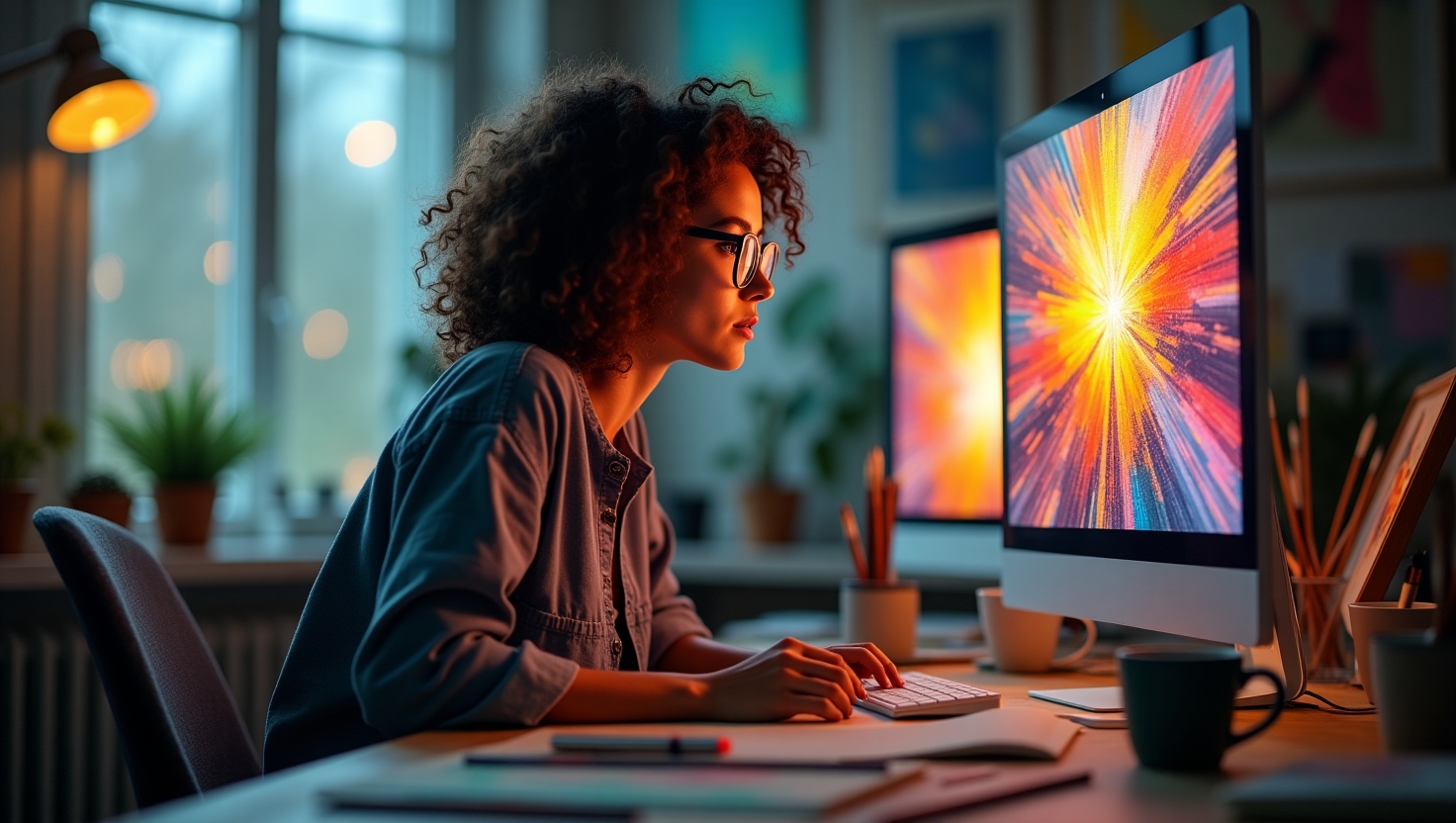The Intersection of AI and Creativity: Revolutionizing Artistic Expression
Introduction
In a world where the line between man and machine grows increasingly blurred, one area stands at the forefront of this convergence: creativity. The integration of AI into creative processes is not merely a trend; it’s a seismic shift that challenges the traditional paradigms of artistic expression. As AI technologies advance, the collaboration between human creativity and AI capabilities becomes not only possible but also essential. This intersection provokes questions about the very nature of creativity itself. Is art still art when crafted by an algorithm? Or is this union the ultimate form of innovation, unlocking new realms of digital art and expression indicative of the future? Let’s dive into the world where AI and creativity meet, transforming the canvas of artistic creation.
Background
AI and Creativity
The dance between AI and creativity is one of both harmony and tension. On one hand, AI’s emergence in the creative space brings forth tools that explore the unknown depths of artistic possibilities. Generative AI, a subfield of artificial intelligence, employs algorithms to produce new content, from paintings to music compositions, meaningfully reshaping the creative processes. Unlike traditional tools that merely assist, generative AI has a hand in the conceptual stage, suggesting colors, themes, and even entire compositions, raising the bar for what constitutes original work.
Historical Context
To fully appreciate the role of AI in creativity, we must trace the evolution of art alongside technological advancements. From the invention of the paintbrush and the printing press to digital tablets and now AI, each leap forward has revolutionized how artists express themselves. Historically, these shifts have been met with resistance, yet eventually accepted as tools that expand the vocabulary of innovation. Much like photography was once seen as a threat to painting, so too is AI viewed with skepticism by traditionalists. However, as history demonstrates, technology invariably enriches artistic capabilities, if artists are willing to embrace it.
Current Trends
Rise of Generative AI
Today, digital art stands on the shoulders of giants: the algorithms behind generative AI. Platforms like DALL-E, Midjourney, and RunwayML are not just buzzwords but central players in the art world. They empower artists by offering boundless creativity, enabling them to produce work at accelerated speeds without compromising quality. This influx has ushered in a renaissance in digital art, where artists not only produce visually stunning pieces but also push the boundaries of what art can achieve or represent.
Changes in Creative Processes
Creativity is no longer a solitary endeavor. With AI, artists now have a collaborative partner. Where historically an artist might spend hours perfecting a single stroke, AI allows for experimentation, variation, and rapid prototyping, cultivating an atmosphere where innovation flourishes. By integrating AI into their workflows, artists can streamline their processes, focusing instead on the vision they wish to articulate. The result? A fusion of human intuition with machine precision.
Insights
Human vs. AI Creativity
The debate over the authenticity of AI-created works continues to stir controversy. Can a machine-generated image or composition hold the same creative value as one born from human intuition and experience? AI is disrupting the traditional view of creativity source, suggesting that creativity is not a fixed attribute but an evolving dialogue between human and machine. As artists, we must grapple with this disruption and question: Can art crafted by AI still speak to the depths of the human soul?
Ethical Considerations
With great power comes great responsibility. As AI’s role in creation intensifies, so too do the ethical dilemmas. Plagiarism, copyright issues, and questions of ownership loom large. Creators and technologists alike must navigate these murky waters, establishing new ethical frameworks that respect the contributions of both human and machine. Ethical considerations are paramount as we delve deeper into a world where the distinction between creator and tool becomes ever more complex source.
Future Forecast
The Future of Digital Art
Looking ahead, the trajectory is clear: AI will continue to redefine the landscape of digital art. One can envisage a future where art itself is interactive, ever-changing, and responsive, molded by AI in real-time in response to viewer engagement or environmental factors. This dynamic form of expression will not only challenge what art is but also transform entire industries.
Practical Applications
Beyond the gallery, AI’s potential applications in creative fields are vast. Imagine a world where advertisements are not just seen but felt, where films adapt in real-time to the nuanced reactions of viewers, or where design seamlessly morphs to meet the evolving needs of users. The possibilities are as boundless as human imagination, only now augmented by the computational power of AI.
Call to Action
The creative industry stands on the precipice of a new era. Embracing AI in your creative process is not just about keeping up but about leading the charge into uncharted territories. Test the boundaries, push the limits of generative AI, and share your journey. By cultivating an open dialogue about these tools, we can shape the future of art together, ensuring it reflects our diverse and rich tapestry of human experience.
